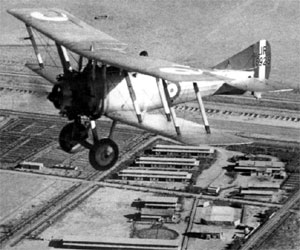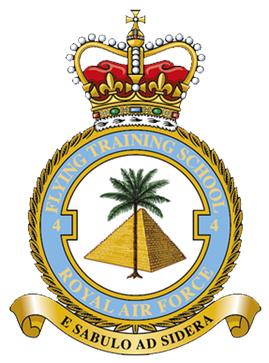
The Westland Whirlwind was a British twin-engined fighter developed by Westland Aircraft. A contemporary of the Supermarine Spitfire and Hawker Hurricane, it was the first single-seat, twin-engined, cannon-armed fighter of the Royal Air Force.
Westland Aircraft was a British aircraft manufacturer located in Yeovil, Somerset. Formed as a separate company by separation from Petters Limited just before the start of the Second World War, Westland had been building aircraft since 1915. During the war the company produced a number of generally unsuccessful designs, but their Lysander would serve as an important liaison aircraft with the Royal Air Force. After the war the company focused on helicopters, and was merged with several other British firms to create Westland Helicopters in 1961.

Hawker Siddeley was a group of British manufacturing companies engaged in aircraft production. Hawker Siddeley combined the legacies of several British aircraft manufacturers, emerging through a series of mergers and acquisitions as one of only two such major British companies in the 1960s. In 1977, Hawker Siddeley became a founding component of the nationalised British Aerospace (BAe). Hawker Siddeley also operated in other industrial markets, such as locomotive building and diesel engine manufacture. The company was once a constituent of the FTSE 100 Index.

The Gloster E.28/39, was the first British turbojet-engined aircraft first flying in 1941. It was the fourth turbojet aircraft to fly after the German Heinkel He 178 (1939), the Italian Caproni Campini N.1 (1940) And the Heinkel He 280 (1941).

The Folland Gnat is a British compact swept-wing subsonic fighter aircraft that was developed and produced by Folland Aircraft. Envisioned as an affordable light fighter in contrast to the rising cost and size of typical combat aircraft, it was procured as a trainer aircraft for the Royal Air Force (RAF) as well as by export customers, who used the Gnat in both combat and training capacities.

The Gloster Aircraft Company was a British aircraft manufacturer from 1917 to 1963.

William Edward Willoughby "Teddy" Petter was a British aircraft designer. He is noted for Westland's wartime aeroplanes, as well as the Canberra, the early design of the Lightning, and his last plane, the Folland Gnat.

The Gloster Grebe was developed by the Gloster Aircraft Company from the Gloster Grouse, and was the Royal Air Force's first post-First World War fighter aircraft, entering service in 1923.
Henry Philip Folland OBE was an English aviation engineer and aircraft designer.

The Gloster Gamecock was a biplane fighter designed and produced by the British aircraft manufacturer Gloster.

The Gloster Gauntlet was a single-seat biplane fighter designed and produced by the British aeroplane manufacturer Gloster Aircraft in the 1930s. It was the last fighter to be operated by the Royal Air Force (RAF) to have an open cockpit, and also the penultimate biplane fighter in its service.

Royal Air Force Horsham St Faith or more simply RAF Horsham St Faith is a former Royal Air Force station near Norwich, Norfolk, England which was operational from 1939 to 1963. It was then developed as Norwich International Airport.

The Gloster F.9/37, also known as the Gloster G.39, was a British twin-engined design from the Gloster Aircraft Company for a cannon-armed heavy fighter to serve with the Royal Air Force, planned before the Second World War. The F.9/37 was rejected in favour of other designs.

Wilfred George Carter CBE FRAeS was a British engineer, who was the chief designer at Glosters from 1937. He was awarded the C.B.E. in 1947 and was appointed Technical Director of Gloster Aircraft in 1948 remaining on the board of directors until 1954. He continued to serve Glosters for a number of years after his retirement in a consultancy role until 1958. He designed the first British jet aircraft.

Royal Air Force Chilbolton or RAF Chilbolton is a former Royal Air Force station in Hampshire, England. The airfield was located in Chilbolton approximately 4 miles (6.4 km) south-southeast of Andover, about 62 miles (100 km) southwest of London.

The Nieuport Nighthawk was a British fighter aircraft developed by the Nieuport & General Aircraft company for the Royal Air Force towards the end of the First World War. Although ordered into production before the aircraft first flew, it did not enter large scale service with the RAF owing to unreliable engines. Re-engined aircraft did see service in Greece, serving from 1923 to 1938.
The Folland Midge was a small, swept-wing British subsonic light fighter aircraft prototype originally developed as a concept demonstrator for the successful Folland Gnat.

No. 4 Flying Training School is a Royal Air Force military flying training school, which manages Advanced Fast Jet Training (AFJT) from its base at RAF Valley in Anglesey, Wales. Its role is to provide fast jet aircrew to the Operational Conversion Units for the RAF's jet attack aircraft, the Eurofighter Typhoon and the Lockheed Martin F-35 Lightning II.
Squadron Leader Edward Alan Tennant DFC was a Royal Air Force (RAF) fighter pilot who later became chief test pilot of Folland Aircraft.
















